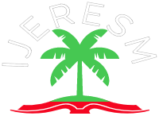Physical Layer Security in Interference-Limited Land Mobile Satellite Communication Systems: Safeguarding Data Transmission
Mahesh Nelavalli
K Subrahmanyam
PG Scholar, Dept. of ECE, Gokula Krishna College of Engineering, Sullurpet
Assistant Professor, Dept. of ECE, Gokula Krishna College of Engineering, Sullurpet
Abstract:
This paper focuses on evaluating the secrecy performance of a downlink land mobile satellite (LMS) system. The system faces the challenge of providing secure communication between a satellite and a legitimate user while an eavesdropper is present on the ground. Additionally, co-channel interference signals at the user’s destination are considered. To address these issues, the study proposes a novel approach that utilizes Shadowed-Rician fading channels for satellite links and Nakagami-m fading for interfering terrestrial links. The main objective is to enhance the physical layer security of Interference-Limited Land Mobile Satellite Communication Systems. The approach incorporates advanced signal processing, beamforming, and artificial noise techniques to effectively manage interference. Encryption, authentication mechanisms, and intelligent power control strategies are implemented to protect transmitted data and optimize signal strength while reducing the risk of interception by potential eavesdroppers. Through comprehensive simulations, the proposed approach is thoroughly evaluated, demonstrating its effectiveness in achieving improved secrecy performance and increased resilience against security threats. The findings highlight the potential for its application in secure satellite communication systems operating in interference-constrained environments.
Keywords: Co-channel Interference, Downlink, Eavesdropper, Interference-Limited, Land Mobile Satellite Communication, Physical Layer Security, Secrecy Performance, Shadowed-Rician Fading, Nakagami-m Fading
References:
- Yang and M. O. Hasna, “Performance analysis of amplify-and-forward hybrid satellite-terrestrial networks with cochannel interference,” IEEE Trans. Commun., vol. 63, no. 12, pp. 5052-5061, Dec. 2015.
- K. Upadhyay and P. K. Sharma, “Multiuser hybrid satellite-terrestrial relay networks with co-channel interference and feedback latency,” in Proc. European Conf. on Netw. and Commun. (EuCNC), Athens, Greece, June 2016, pp. 174-178.
- Bankey and P. K. Upadhyay, “Ergodic capacity of multiuser hybrid satellite-terrestrial fixed-gain AF relay networks with CCI and outdated CSI,” IEEE Trans. Veh. Technol., 2018, DOI: 10.1109/TVT.2018.2793420.
- G. Andrews, S. Buzzi, W. Choi, S. V. Hanly, A. Lozano, A. C. K. Soong, and J. C. Zhang, “What will 5G be?,” IEEE J. Sel. Areas Commun., vol. 32, no. 6, pp. 1065-1082, June 2014.
- Leung-Yan-Cheong and M. Hellman, “The Gaussian wire-tap channel,” IEEE Trans. Inf. Theory, vol. 24, no. 4, pp. 451-456, 1978.
- R. Bhatnagar and Arti M. K., “Performance analysis of AF based hybrid satellite-terrestrial cooperative network over generalized fading channels,” IEEE Commun. Lett., vol. 17, no. 10, pp. 1912-1915, Oct. 2013.
- I. Miridakis, D. D. Vergados, and A. Michalas, “Dual-hop communication over a satellite relay and Shadowed-Rician channels,” IEEE Trans. Veh. Technol., vol. 64, no. 9, pp. 4031-4040, Sep. 2015.
- Alfano and A. De Maio, “Sum of squared Shadowed-Rice random variables and its application to communication systems performance prediction,” IEEE Trans. Wireless Commun., vol. 6, no. 10, pp. 3540-3545, Oct. 2007.
- B. da Costa, H. Ding, and J. Ge, “Interference-limited relaying transmissions in dual-hop cooperative networks over Nakagami-m fading,” IEEE Commun. Lett., vol. 15, no. 5, pp. 503-505, May 2011.
- C. S. Santos Filho and M. D. Yacoub, “Nakagami-m approximation to the sum of M non-identical independent Nakagami-m variates,” Electron. Lett., vol. 40, no. 15, pp. 951-952, July 2004.
- S. Adamchik and O. I. Marichev, “The algorithm for calculating integrals of hypergeometric type functions and its realization in reduce system,” in Proc. Int. Symp. Symbolic and Algebraic Computation (ISSAC), Tokyo, Japan, Aug. 1990, pp. 212-224.
- Gradshteyn and I. M. Ryzhik, Tables of Integrals, Series and Products, 6th ed. New York: Academic Press, 2000.
